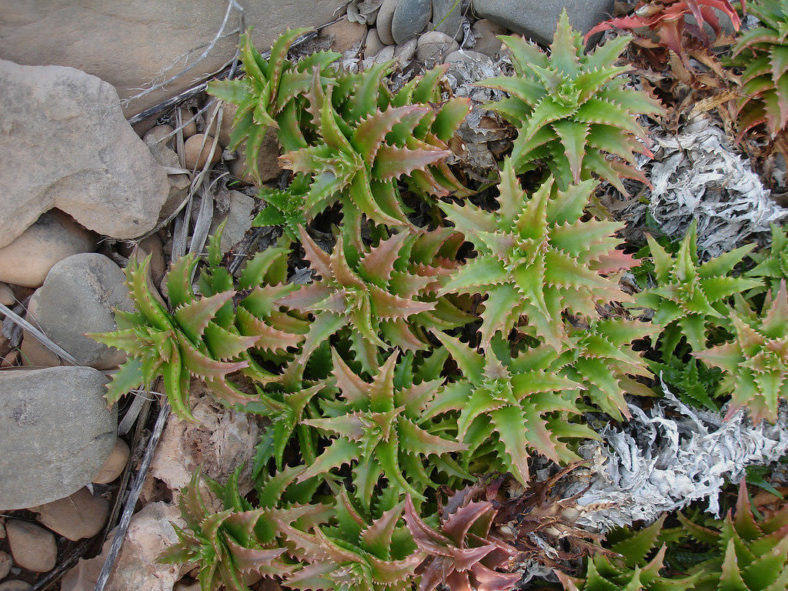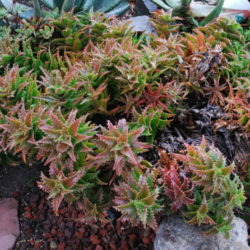Scientific Name
Aloe buettneri A.Berger
Common Name(s)
West African Aloe
Synonym(s)
Aloe agavifolia, Aloe congolensis, Aloe paludicola
Scientific Classification
Family: Asphodelaceae
Subfamily: Asphodeloideae
Genus: Aloe
Origin
The native range of Aloe buettneri is mainly in West Africa, especially Senegal, Nigeria, and Togo, but it can also be found in Central and Southern Africa. It grows in grassy places in the moister savanna areas.
Description
Aloe buettneri, also known as Aloe congolensis, is a small succulent that forms rosettes of fleshy, broad, bright green leaves with sharply toothed margins. The rosettes grow from an underground bulb-like base and can reach up to 8 inches (20 cm) in height and 5 inches (12.5 cm) in diameter. The leaves turn reddish-brown when the plant is under drought or cold stress.
The flowers are pinkish-red or reddish-orange and appear arranged in a loose panicle from late fall to mid-winter.
Aloe buettneri is known for its medicinal uses.

Hardiness
USDA hardiness zones 10a to 11b: from 30 °F (−1.1 °C) to 50 °F (+10 °C).
How to Grow and Care
Aloe is a very forgiving plant, and a well-grown plant can be quite beautiful. However, as with all succulents, Aloe must never be allowed to sit in stagnant water, and the plant should be carefully monitored to watch for signs of overwatering.
These succulents are not particularly fast-growing and will only rarely need repotting. However, in the spring, repot Aloes tip over their pots or have ceased growing. Use a fast-draining potting mix with one-third of sand or pebbles. When repotting a larger plant, it is possible to divide the root ball carefully. Some varieties of Aloe will send off offsets that can be potted independently.
Aloe plants need strong, bright light. They can withstand full summer sun once acclimated. In the winter, provide bright light. It prefers warmer temperatures of 70 to 80 °F (21 to 27 °C) but will survive down to 40 °F (4.5 °C). Feed with a succulent fertilizer in the summer only. Suspend feeding in the winter as the plant goes dormant.
See more at How to Grow and Care for Aloe.
Links
- Back to genus Aloe
- Succupedia: Browse succulents by Scientific Name, Common Name, Genus, Family, USDA Hardiness Zone, Origin, or cacti by Genus
Photo Gallery
Click on a photo to see a larger version.



